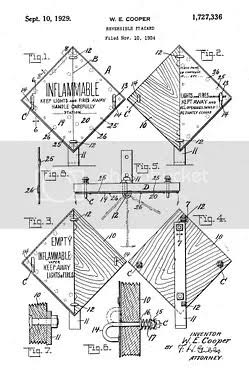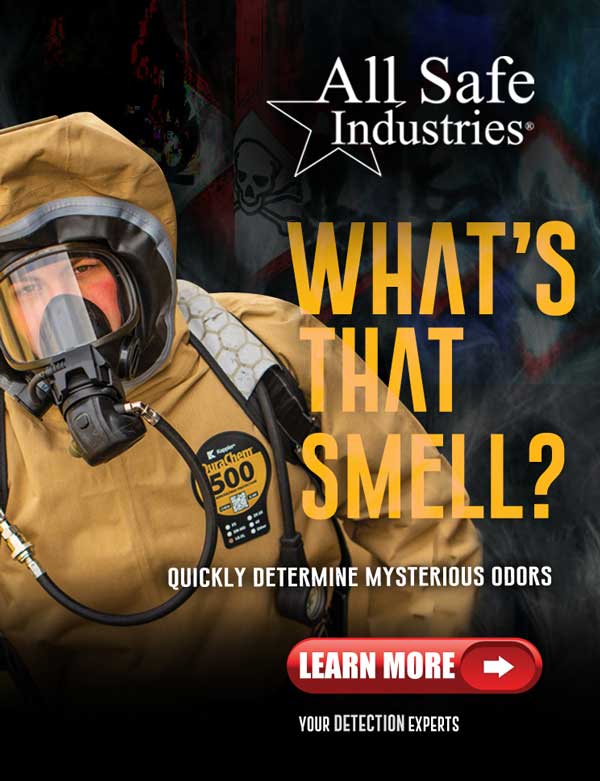The history of hazardous materials goes back as far as man can imagine chemicals being in existence. We have come a long way over the years and have had many major events, developments and breakthroughs in technology to get us where we are today. One thing that has remained consistent, is the use of tools and markings that require little to no technology to function. One of those tools is the standardized marked placard system for distinguishing hazardous materials being transported in various forms of containers by rail, highway and sea/air.

The U.S. Occupational Safety & Health Administration (OSHA) has also adopted the DOT system and requires hazardous materials placarded in transportation to continue to be placarded during storage and use. Placards and labels must remain in place until the material is used up and the container is purged of the residue.
Railroads first required trains that transported explosives used for blasting earth materials to clear routes for train track lines to be marked around 1909-1910, after the Bureau of Explosives was established in 1907, it served as a unique membership organization dedicated to helping carriers, shippers, and container manufacturers continually improve hazardous materials (hazmat) transportation safety.
“Formed in 1907 by the railroad industry to serve as a self-policing agency to advance the safe transportation of explosives and other dangerous articles, the BOE actually developed the first hazmat safety rules, which were later adopted and expanded upon by the Interstate Commerce Commission and later the U.S. Department of Transportation (DOT).”
Placard designs have changed over the years as developments in technology, and hazards began to take form in various ways. Commonly they were referred to as “warning labels” and were made of a paper cardstock material to resist weather and elements commonly encountered on the railroad.
These warning labels changed only slightly over the years until the 1970’s. After many catastrophic transportation incidents involving rail, land, and sea from 1970-1975, Congress met to address the emerging hazards and their impact on the general public and voted to pass the Hazardous Materials Transportation Act, which was published publicly in 1975. Its primary objective is to provide adequate protection against the risks to life and property inherent in the transportation of hazardous material in commerce by improving the regulatory and enforcement authority of the Secretary of Transportation.
Although not a fully functioning regulatory agency in the United States, the United Nations has placed a series of marking recommendations worldwide.
There are many federal mandated resolutions passed that regulate identification of hazardous materials in the United States, with 2 of those being HM-215A, and HM-215O. HM-215A, issued on December 29, 1994 was set to meet US regulations to be more parallel with those set forth by the United Nations who strives to make uniform regulations for all hazardous materials.
In 2018, HM-215O was released which added lithium to its classifications and modified the global harmonization system of classification. This all ties into what we currently have today known as the 9 classifications of hazardous materials placarding systems. This is important to note that the passing of such regulations in years past helped to eliminate confusing marking systems and create a unified identification system for first responders. At one point many federal agencies had their own designated marking systems and they often caused confusion among other agencies when trying to identify and interpret markings from other agencies.
NFPA 704: Safety in Stores
All firefighters and emergency personnel are familiar with the NFPA 704 diamond, which is used to label hazards inside a fixed facility. While this marking system is not widely used, it’s growth is noted in major metropolitan areas to label hazardous inside businesses for emergency responders. The NFPA 704 diamond was finalized in 1957. DOT did not develop the 704 Diamond system for transportation markings, only fixed storage facilities. This marking system, while not federally required, is only required locally by ordenices.
The NFPA 704 marking system is a color based system that has designated colors to show a specific hazard. R indicates flammability,, yellow instability, blue for health of exposure victims, and white labels special information. Special information located in the white quadrant listed in the 704 standard most commonly known identifies products as includes materials that react violently or explosively with water, in addition to other special considerations that may be published to alert first responders.
In summary, regulations passed regarding the creation of a standardized hazardous materials identification program have aided in the training of emergency responders nationwide to be able to identify hazardous substances in a moments notice, whether in the road, railways or at fixed facilities and will better assist in mitigating hazardous exposures through responders knowledge and response.
Photos credit: Edmund/gmpullman



